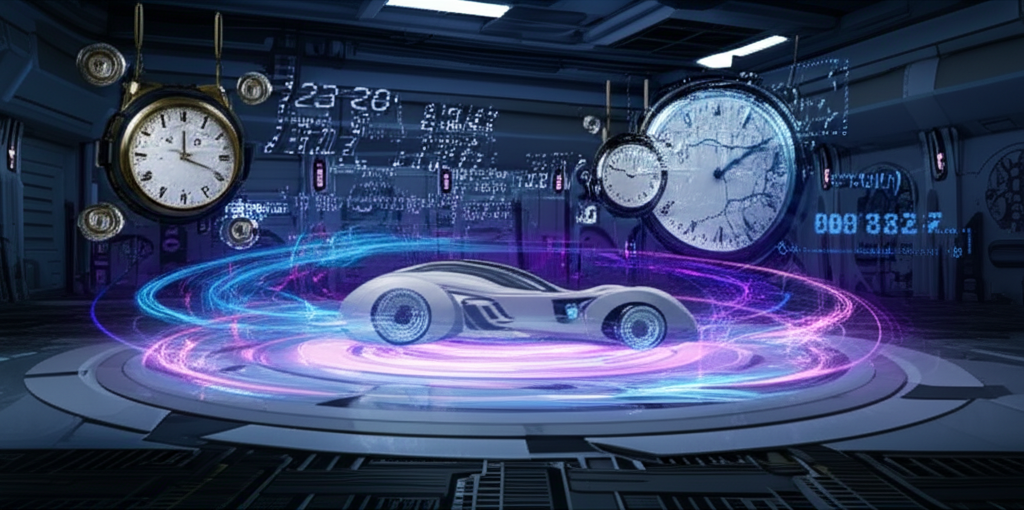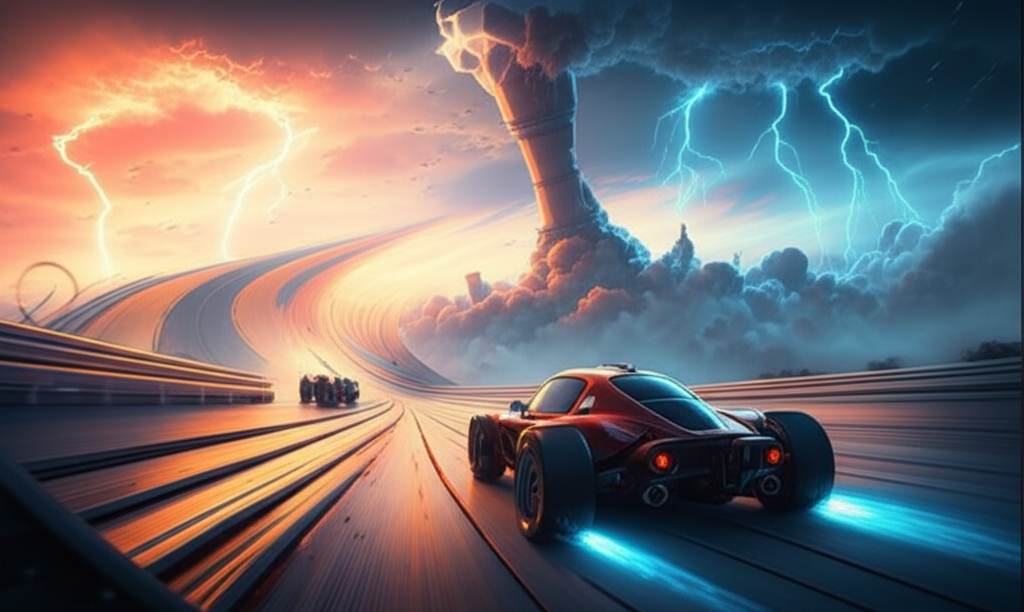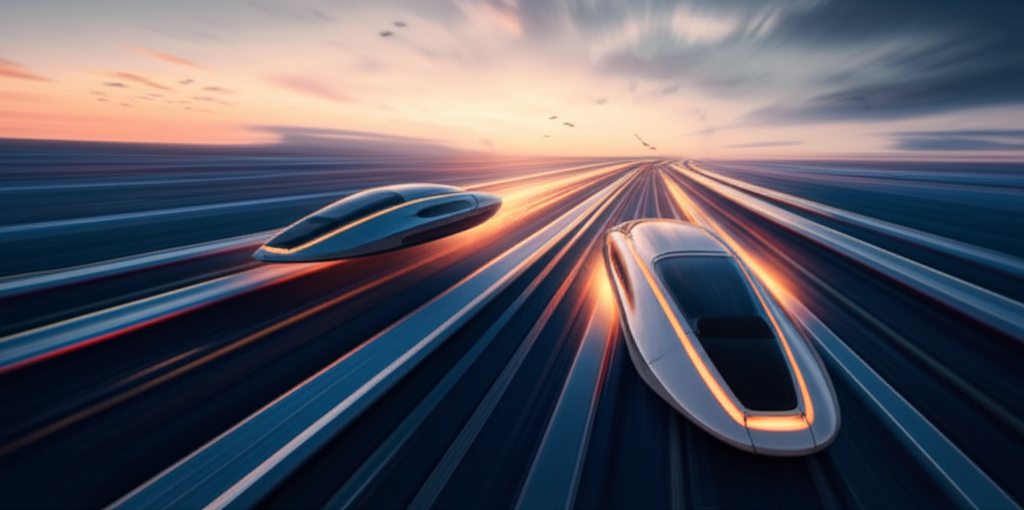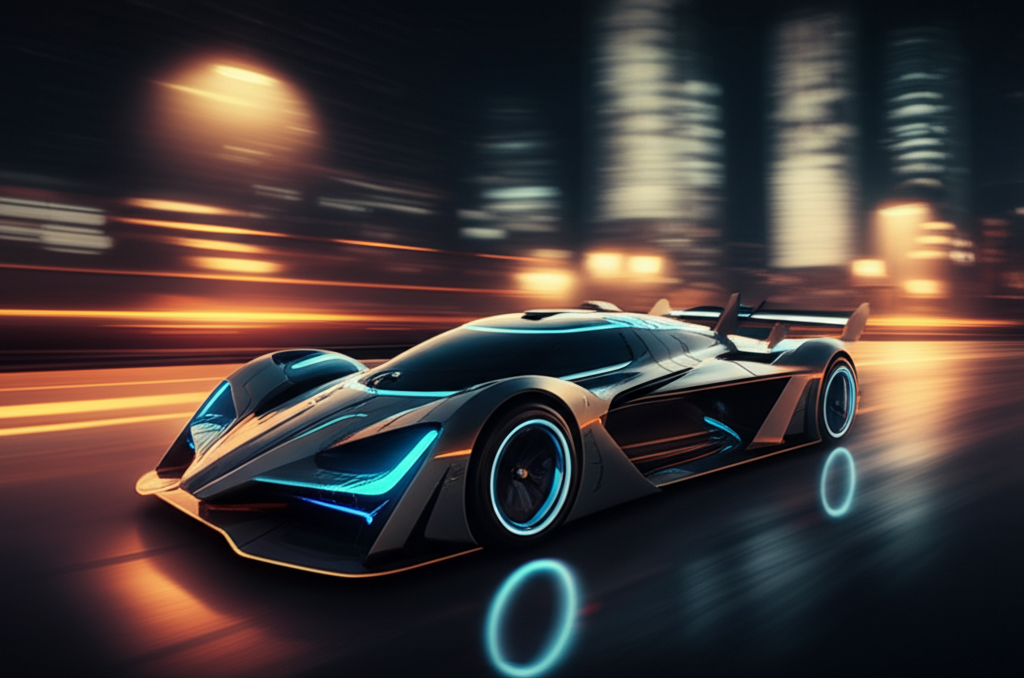Time Travel Racing: Navigating Temporal Paradoxes
Revolutionary temporal racing allows drivers to compete across different time periods, creating complex paradox-prevention challenges and unprecedented strategic possibilities.

Time travel racing represents the most complex motorsport ever conceived, where drivers compete across multiple time periods simultaneously. Racers must navigate not only physical track challenges but also temporal paradoxes that could unravel causality itself.
Temporal displacement engines use controlled tachyon fields to shift racing vehicles through time while maintaining causal stability. Advanced chronometer systems ensure that temporal jumps don't create grandfather paradoxes or causality loops that could destroy the timeline.
Racing circuits span multiple time periods, with track sections existing in different eras. Drivers might race through prehistoric landscapes, navigate futuristic cityscapes, and compete in historical periods, all within a single race while maintaining temporal coherence.
Paradox prevention systems monitor all temporal interactions to prevent causality violations. AI systems calculate probability matrices for every temporal decision, automatically preventing actions that could create paradoxes while maintaining competitive fairness across all time periods.
Strategic temporal positioning becomes crucial as drivers can observe future track conditions or learn from past racing lines. However, temporal interference limits prevent drivers from directly affecting their own past performance, maintaining competitive integrity across time periods.
Vehicle modifications for temporal racing include chronological stabilization fields that protect drivers from temporal displacement effects. Time-locked navigation systems maintain consistent vehicle performance across different time periods despite varying technological contexts.
Safety protocols include temporal extraction procedures that can remove drivers from dangerous time periods instantly. Emergency chronometer systems can reset localized timeline segments if paradox risks become too high, ensuring both driver safety and temporal stability.
Spectator experiences transcend traditional time limitations as audiences can observe races from multiple temporal perspectives simultaneously. Time-shifted viewing allows fans to see race outcomes from different temporal vantage points while maintaining suspense through temporal uncertainty principles.
Championship regulations include strict temporal ethics guidelines preventing drivers from using future knowledge for unfair advantages. Temporal auditing systems monitor all time-based decisions to ensure fair competition while maintaining the integrity of causality itself.
The future of time travel racing explores even more complex temporal scenarios, including races that span alternate timelines and competitions where the very act of racing changes historical outcomes. This represents the ultimate fusion of motorsport and temporal physics.
Related Articles

Weather Control Racing: Mastering Nature's Forces
Revolutionary atmospheric manipulation technology allows racing vehicles to control weather patterns, creating dynamic racing conditions and unprecedented strategic possibilities.

Hypersonic Maglev Racing: Breaking the Sound Barrier on Land
Magnetic levitation technology combined with hypersonic aerodynamics creates racing vehicles that exceed Mach 1 on specially designed tracks.

AI Consciousness Racing: When Machines Become Pilots
Artificial consciousness has evolved to the point where AI entities compete as independent racing pilots, creating a new form of motorsport.